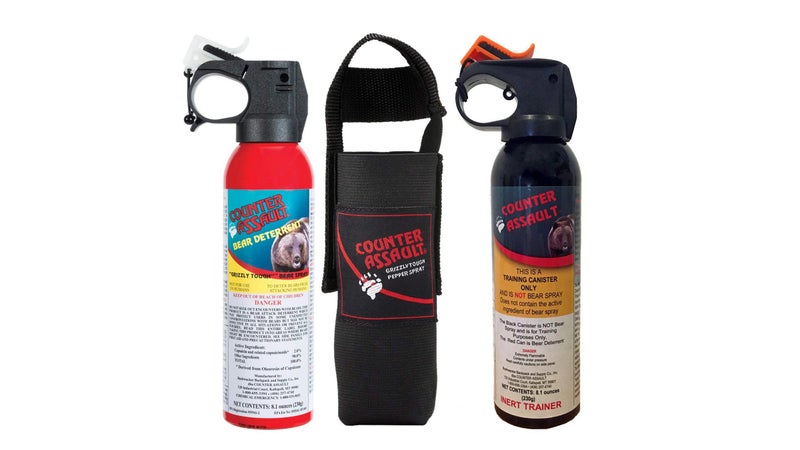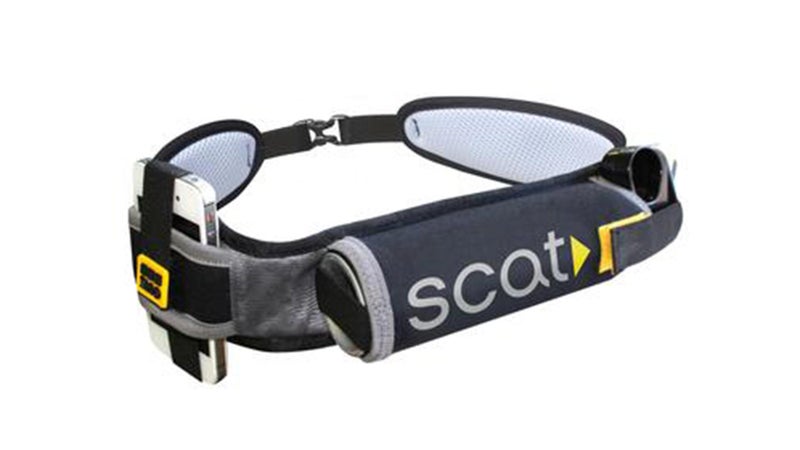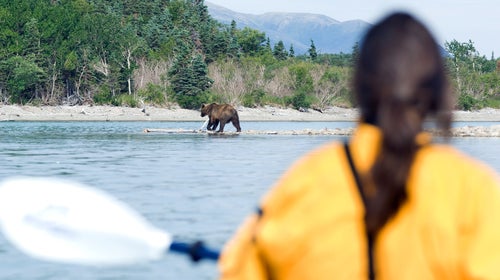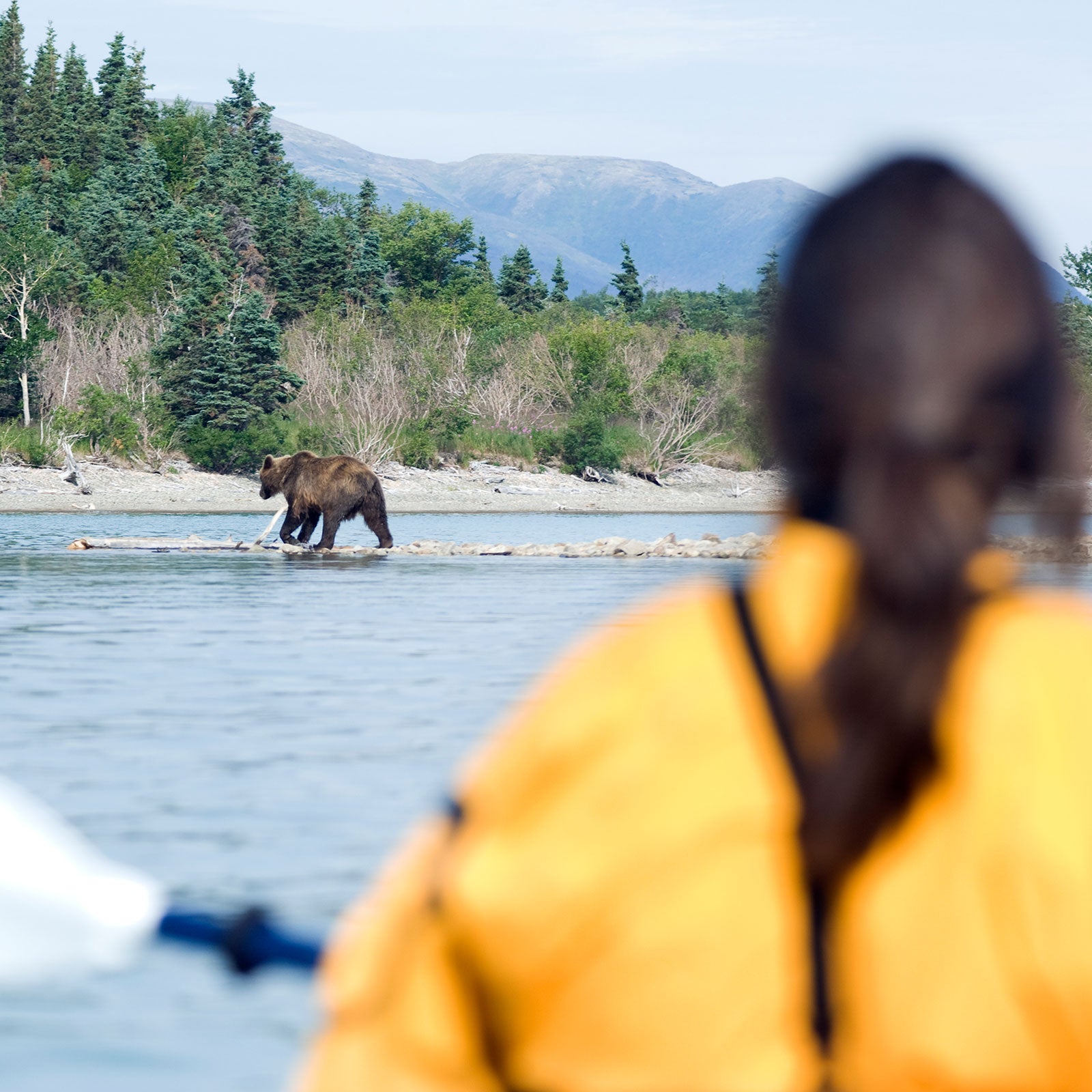In the rare chance that a bear charges you, it pays to have spray—and know how to use it.
What’s In It

Grab a can of bear spray if you’re heading into bear territory. Counter Assault sells a ($65) with a 10.2-ounce canister plus a belt holster and a training can to practice with. Sabre offers its ($44) and makes belt and chest holsters. The mixture in the aerosol can contains 2 percent capsaicin, the active component of chili peppers and the same thing you’ll find in a container of Mace pepper spray. When you push the trigger, the canister releases a stream of the mixture, shooting it between 25 and 35 feet and temporarily irritating the bear’s eyes, nose, mouth, and skin with a harsh, burning sensation.
“For a bear, who has a sense of smell that’s considered to be seven times greater than that of a dog, when that spray gets in their snout, it’s very painful,” says Nils Pedersen. He’s a trained wildlife biologist from Fairbanks, Alaska, and a human-bear conflict specialist with the , a wildlife conservation organization. “It causes their eyes to water, and all their means of perception are temporarily disabled.”
How to Carry It

If you have a surprise encounter with a bear, it’ll happen fast—you won’t have time to dig around in your backpack to retrieve the spray. “Carry it on your person, and have it readily accessible,” Pedersen says. That means if you’re mountain biking, don’t put it in the water-bottle holder on your down tube, since you’ll want it on you in case you get separated from your bike. Strap the holster to your belt. The ($40) is also a great option; it’s made from stretchy neoprene and holds the can in place if you’re running or hiking.
How to Use It
So let’s say you run into a bear. If it’s far away and doesn’t notice you, maintain a safe distance, back slowly away, and give it a wide berth. There’s no reason to yell or run. If the bear is close and notices you, again, don’t run. Back away, wave your arms, and let the bear know you’re not there to surprise or encroach on it. If the bear starts approaching you, stand your ground, note the wind direction, and adjust so that, if you do fire, the spray won’t fly back at you. Have the canister in your hand and ready. Be sure the safety is off—on the Counter Assault and Sabre sprays, it’s a white tab around the thumb trigger on top of the handle. “Bear spray is a last-resort kind of defense,” says Pedersen. “If used correctly, it can be quite effective.”
If the bear is coming toward you at a charge, wait until it’s within ten yards. Then, holding the can with two hands (one on the trigger, one on the can), press the trigger with your thumb and spray the entire can’s contents into the bear’s face. “People have a tendency to recoil upward when the spray starts, when in fact you want to spray down toward the bear,” Pedersen says.
What to Do After
Assuming the spray is effective, the bear will be repelled, and you’ll hopefully have ample time to get away. Most bears will run away after they’ve been sprayed, but in some cases bears have returned to the scene—so definitely don’t stick around the area if possible. If the spray wasn’t effective—maybe you sprayed too early or too far away or you didn’t aim into the bear’s face—you’ve got a big issue on your hands.
“If you suspect that the bear attack is predatory, fight back,” says Pedersen. “A predatory bear is going to stalk you quietly and inquisitively, with a look in their eyes that may be reminiscent of a cat looking at its play toy or a dog chasing a ball or Frisbee: intent and way too interested in you for comfort.” But if it’s a surprise encounter or you think the attack is defensive (like if it pops its jaw at you, huffs, hisses, or swats at the ground), Pedersen says to play dead. “Lie flat on your stomach with your legs apart and cover your neck. Neither of those scenarios is ideal. Bear spray is a lot easier to use than a firearm, and you never want to have to kill a bear, but for me, I carry bear spray and I carry a firearm.”
Other Things to Know
Most bear sprays have a shelf life of four years, so remember to swap out your old, unused cans. Never store bear sprays in particularly high or low temperatures, like hot cars or freezing tents.
If some of the spray gets on you, wash your skin and clothing immediately with water and take quick breaths to avoid inhaling too much. And if you accidentally discharge a canister, leave the area—bear spray in a tent, car, or other confined space will quickly become a very uncomfortable situation.
Practice makes perfect. Get a , which has no harmful ingredients, so you can practice with it. The and offer good tutorials online, and REI occasionally teaches , where you’ll get to test out bear spray yourself.


